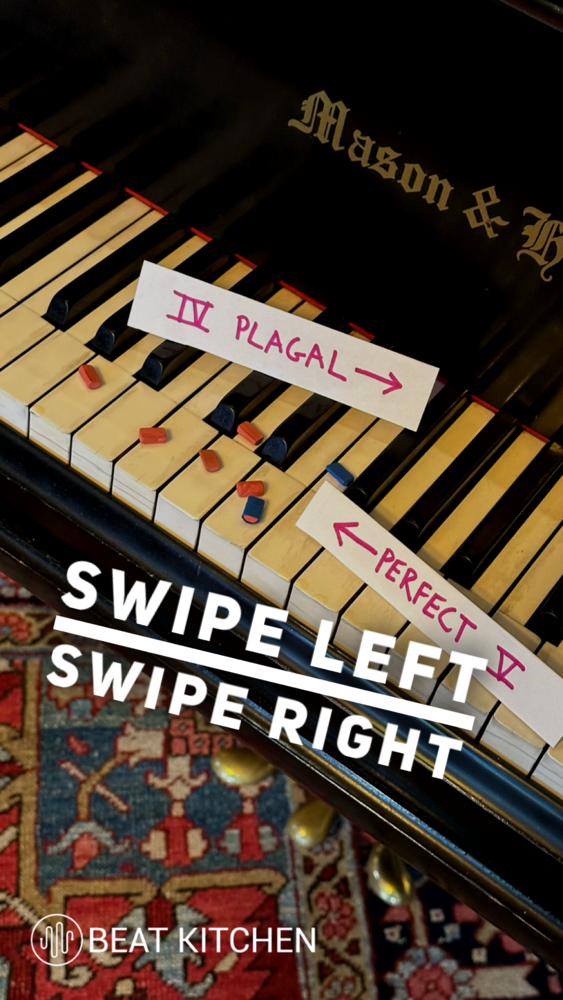Every chord has a parent and a child, and every chord is a parent and a child. We call those relationships perfect and plagal. We swipe right for the plagal and return to the one from the four.
Swipe left, and you’re reaching out to the five chord, and that’s the perfect cadence. The beauty is that nearly every chord acts as either a parent or a child. In the case of the plagal cadence, the one stays the same, and so two notes move.
That’s why we swipe right. It’s the five that remains in the perfect cadence, and that’s why we swipe left. And now here’s the thing, because depending on whether we are calling that G chord the one or the five, it could be either parent or child.
And this motion could be seen as either a swipe right or a swipe left, depending on whether it’s a departure or a return. It’s one of the uniquely beautiful things about music. It’s narrative, and it’s ultimately the role of the storyteller, who inform us as to who belongs to whom.
(light music)

